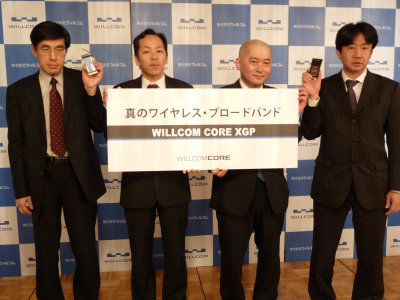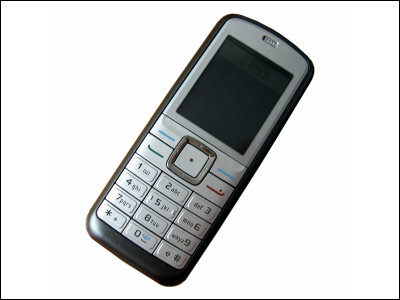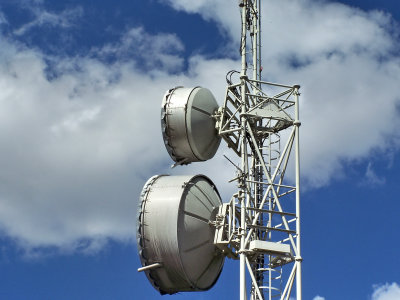By the way, I tried asking Kyocera about the inconvenient situation as to what the cheap domestic communication standard "iBurst" is like.
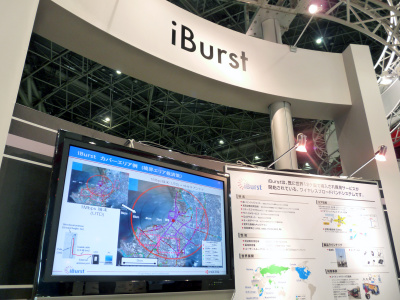
The domestic communication standard for mobile is widely used for 2nd generation mobile phones and so onPDC method"Willcom is servicing"PHS"And so on. And while WILLCOM was authorized to start services of the next-generation standard "XGP" from the Ministry of Internal Affairs and Communications in Japan, it can be deployed at a very low cost, so the monthly usage fee can be reduced to around 2,000 yen Nevertheless, there are certain domestic communication standards that are placed in an unfair position. Its name is "iBurst", even though I was born in Japan, commercial service has already been started in 12 countries outside Japan other than Japan, so I am in a state I do not understand.
This time, domestic production communication standard stood in such unfavorable position "IBurstAbout Kyocera booth at Wireless Japan 2009 I was able to hear various stories.
So why is there anything like this before?
This is the Kyocera booth of Wireless Japan 2009. Kyocera supplies base stations to mobile phone companies, and NTT DoCoMo also handles base stations for high-speed communication service "LTE" scheduled to start commercial service in 2010.

Outline of Kyocera's LTE base station. There are two kinds of macro base stations covering a wide range and micro base stations capable of closely forming areas.
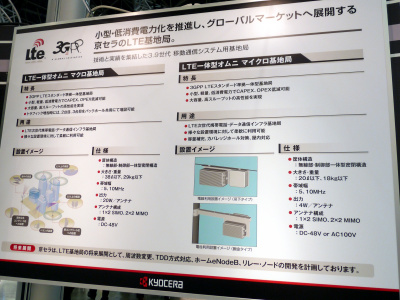
It is effective for countermeasures against areas where radio waves are weak or areas outside the range by laying micro base stations

Subsequently WiMAX service started in Japan

From base station to home repeater, it is Kyocera's idea to handle widely
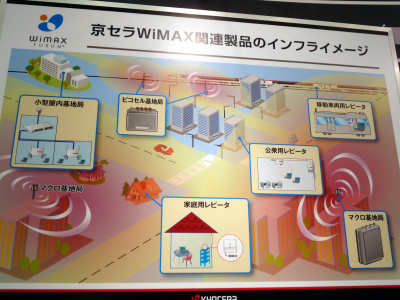
We also offer related products for UQ WiMAX
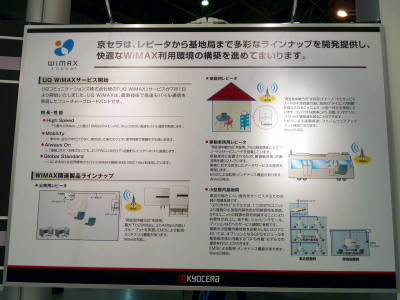
And next-generation high-speed communication service "XGP" WILLCOM plans commercial service
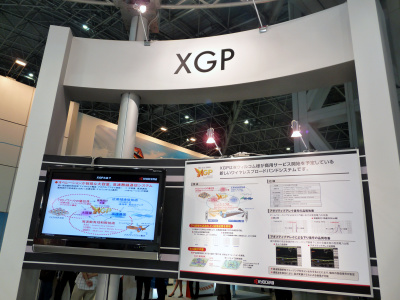
XGP which realizes rising speed which is almost the same as that of descending is using various technologies such as micro cell network and MIMO
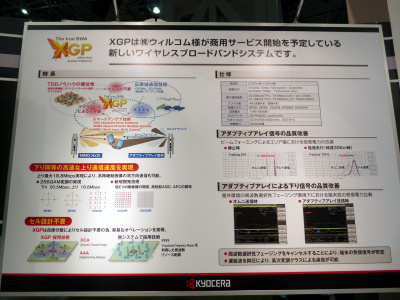
The features of XGP are also high in frequency utilization efficiency
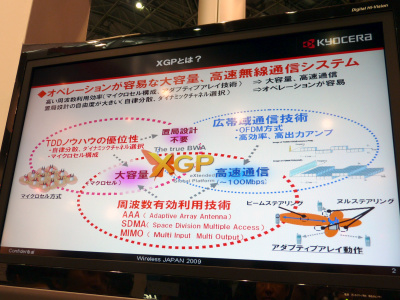
And the wireless broadband standard developed by Kyocera "iBurst" was also exhibited

IBurst already has commercial service in 12 countries around the world
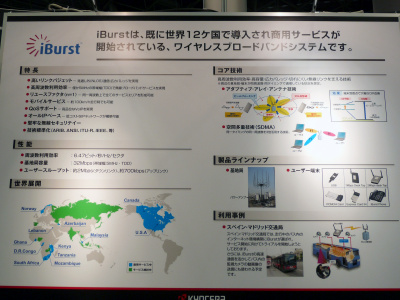
Corresponding product
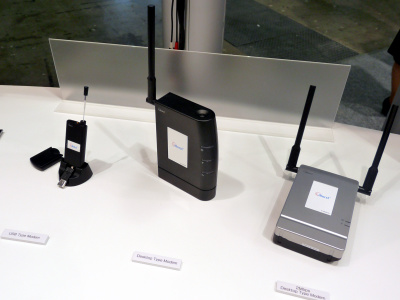
This is a USB type modem
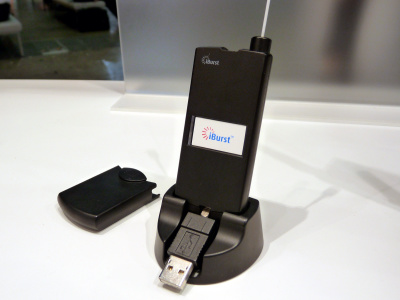
A modem for the desktop is also provided
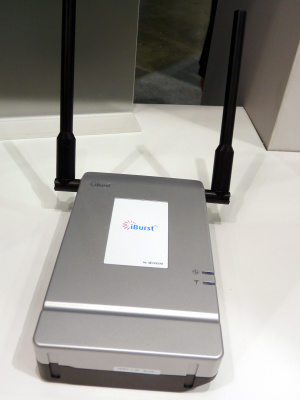
By the way, why is not iBurst itself already started in Japan despite being already ready to start in 2004? When I heard the story, it seems to have become the circumstances as shown in the image below.

· October 2007: Application for returning 2 GHz band frequency license (2.010 ~ 2.025 GHz) because I · P · Mobile collapsed
· December 2007: Japan is not a purchase method, so the Ministry of Internal Affairs and Communications decided to cancel the certification
· January 2008: It was decided to again review the technical conditions for the 2 GHz TDO band at "Frequency Usage Policy Committee of Mobile Phone". Four work group meetings and seven ad hoc meetings have been held since January. Deliberation on technical conditions.
· May 05, 2008: On May 29, reports (draft) of frequency usage policy committee such as mobile phone are summarized. Ultimately deliberation of technical conditions has ended for 5 systems.
· June 2008: Call for opinions for the report from June 9 to July 9
· July 2008: Based on the results of opinion recruitment, report completed on 29th July
· November 2008: Conducted a joint conference together with allocation to the 1.5 GHz band. An opinion statement by a business operator.
· January - February 2009: Disclosure of license allocation policy.
· April - May 2009: We recruited business operators, closed on May 7, but no applicants.
So, why did not the applicant say that there were actually candidates for entry candidates, but during this recession, in addition to not having physical strength to invest billions of yen at a stretch, Japan It is not a method of buying a band but a method of paying a royalty on it by obtaining permission, and if the condition roughly speaks of "Within two years from the start of service it should be maintained so that it can communicate in 90% of Japan"something like. It seems that the result that such a thing is possible is limited to companies with comparable physical strength, so that no one has entered as a result.
Kyocera thought that it would be useless as it is supposed to make a proposal to solve the zero broadband zone in the region using iBurst by using this band. As I talked with some local governments already, it seems that it was very pleasant, but again, it is said that "within 2 years from the start of service it is necessary to maintain communication so that 90% of the whole country can communicate" It has become a considerable bottleneck and it seems that it is being proposed to the Ministry of Internal Affairs and Communications to divide this band into three.
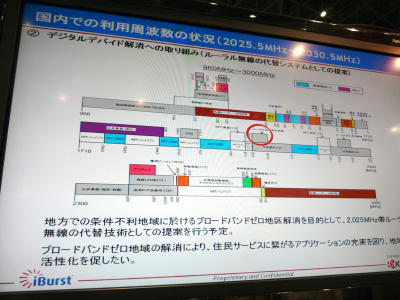
In other words, one of the three divided bands was opened for communication of the national ward requested by the Ministry of Internal Affairs and Communications, the other one to iBurst, the last remaining one to another company We are making proposals in a form like for.
This is a graph showing that iBurst's capital investment and operation costs are overwhelmingly small compared to other communication methods. Originally it is manageable with this budget, so it is said that it is made easy for entry. Even so, if you try to spread it all the way all over Japan, you will need a considerable amount of money as well. Therefore, as Kyocera, broadcasting licenses are approved for each prefecture, it seems that they propose that iBurst's band is approved for each prefecture in the same way and that it is possible to start small .
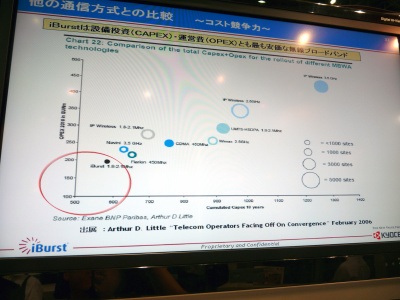
The reason why iBurst's capital investment and operation cost can be reduced is because the base station can cover a wide area with few base stations. With iBurst in this region you can only have six base stations and one junction.

If we plan to cover areas that six base stations were required for iBurst to cover with WiMAX, the number of base stations required is 25 and the difference in cost is obvious. The cheapest usage fee in 12 countries already in service is already 2000 yen monthly, but even if iBurst is launched in Japan, it will be enough for 2000 yen per month.

As for the 2 GHz band returned by iP · Mobile, there is a company that develops communication services using iBurst unless there is no condition that 90% of the country is covered within 2 years as requested by the Ministry of Internal Affairs and Communications. After saying that, as for WiMAX and XGP to which the 2.5 GHz band was allocated, "It is funny to start from Tokyo with anything" and "When you do not know where you will come to the district, what is 90% coverage?" He did it.
Certainly Kyocera's problem raising that broadcasting licenses are issued by each prefecture area, that communication bands are only authorized only nationwide only is a good idea and it is a good idea, If it is possible to start from a small scale, it is possible to make the cost of billions of yen, which is necessary as an initial investment, cheaper, so it is only when the local broadband is not coming, the value of using iBurst It is supposed to be obvious that it will come out, but it seems that there are still problems with a lot of problems and it is not easy to go forward.
By the way, because iBurst was too inconvenient, Kyocera staff gave handouts to the director of the Ministry of Public Management, Home Affairs, Posts and Telecommunications, who came to the venue of Wireless Japan 2009, properly enclosed in a dedicated envelope properly That's right, will iBurst ever see the sun in Japan in the future?
Related Posts:

